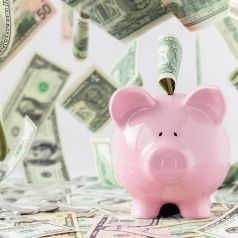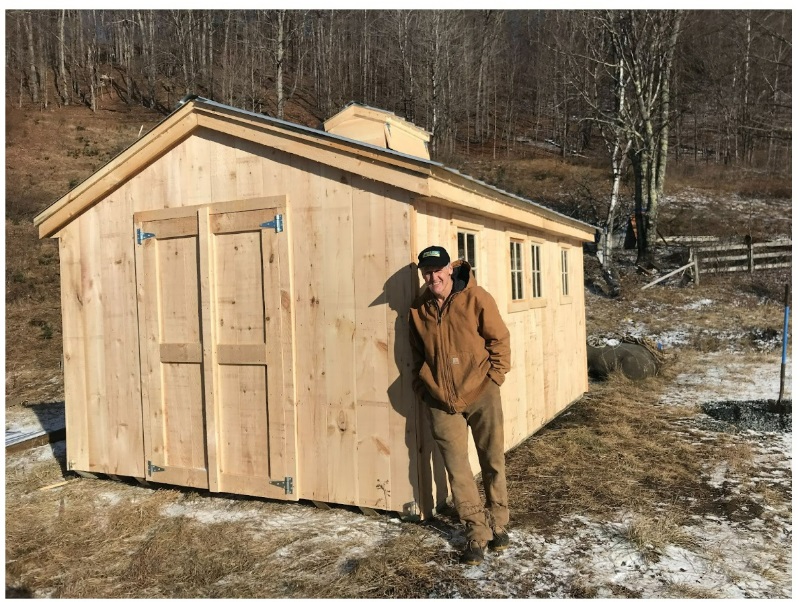<iframe style="width:120px;height:240px;" marginwidth="0" marginheight="0" scrolling="no" frameborder="0" src="//ws-na.amazon-adsystem.com/widgets/q?ServiceVersion=20070822&OneJS=1&Operation=GetAdHtml&MarketPlace=US&source=ss&ref=as_ss_li_til&ad_type=product_link&tracking_id=peaceinvesting-20&language=en_US&marketplace=amazon®ion=US&placement=0060555661&asins=0060555661&linkId=80f8e3b229e4b6fdde8abb238ddd5f6e&show_border=true&link_opens_in_new_window=true"></iframe>|<iframe style="width:120px;height:240px;" marginwidth="0" marginheight="0" scrolling="no" frameborder="0" src="//ws-na.amazon-adsystem.com/widgets/q?ServiceVersion=20070822&OneJS=1&Operation=GetAdHtml&MarketPlace=US&source=ss&ref=as_ss_li_til&ad_type=product_link&tracking_id=peaceinvesting-20&language=en_US&marketplace=amazon®ion=US&placement=1119404509&asins=1119404509&linkId=0beba130446bb217ea2d9cfdcf3b846b&show_border=true&link_opens_in_new_window=true"></iframe>|<iframe style="width:120px;height:240px;" marginwidth="0" marginheight="0" scrolling="no" frameborder="0" src="//ws-na.amazon-adsystem.com/widgets/q?ServiceVersion=20070822&OneJS=1&Operation=GetAdHtml&MarketPlace=US&source=ss&ref=as_ss_li_til&ad_type=product_link&tracking_id=peaceinvesting-20&language=en_US&marketplace=amazon®ion=US&placement=1119376629&asins=1119376629&linkId=2f1e6ff64e783437104d091faaedfec7&show_border=true&link_opens_in_new_window=true"></iframe>

By Dr. Margaret Curtis, WCI Columnist
My husband and I have sold our home in Maine and moved back to Vermont. We sold about a year after the peak of our local market, but we still enjoyed significant appreciation over the 13 years we owned it. We were also incredibly fortunate that, unlike many people looking to change houses in this tight real estate market, we had another home to move into—the house we bought 19 years ago and have been renting out ever since. The end result of all this was about $900,000 sitting in our bank account.
We didn’t anticipate paying federal taxes on this money. Here’s how that works: we bought the house in 2010 for $449,000 and sold it in 2023 for $1.35 million (I know, I know). But:
- We put more than $400,000 into home improvements over the time we owned it (note that home improvements are different than routine maintenance). In IRS language, the cost of home improvements is “added to the basis”—or what you bought the home for. According to the IRS, the basis for our home is $449,000 + $400,000= $849,000. and our profit was $500,001.
- The first $500,000 ($250,000 if filing as a single person) profit from the sale of a primary home is excluded from federal taxation.
Windfalls like this are happy but infrequent. Yours might take the form of a sign-on bonus, the sale of a home or practice, or an inheritance. They can be life-changing no matter the scale. They can be used to build your security or accelerate you toward financial freedom. We were already close to retirement but this made us feel like we made it. For the first time in our adult lives, we feel like we can take our foot off the gas a little.
If you find yourself with a chunk of money, you have to line out your goals and have a plan to meet them. This process is basically a financial “waterfall” but done all at once and adapted for your particular needs. Here’s ours:
Stash It in an Interest-Bearing Account
While you figure out what to do with all this moolah, start earning interest on it. Some of our money was immediately invested, but anything that we would need within 6-9 months, we put in either a high-yield savings account or a CD.
To find a high-yield savings account, I did a Google search and found a handy list on Nerdwallet. I chose CIT Bank because it is FDIC-insured and has no fees. I transferred $250,000 there, the max for FDIC insurance. You can also use an interest-bearing money market account, which is SIPC-insured. The limit on SIPC insurance is $500,000 ($250,000 in cash), and if your investment bank fails, you would have to apply to the government for relief—unlike FDIC, which is automatic.
I put another $300,000 into CDs in our local bank and into short-term Treasury bills (a government bond) at around 5%.
If you can’t decide which savings vehicle to use: you can take money out of a savings account any time but the interest will vary. You can’t cash out a CD or bond until it reaches its maturity date without penalty, but the rate is guaranteed the whole time.
From there, we deployed the money like this.
More information here:
I Have $150,000; Should I Be Nervous About Lump Sum Investing It When the Stock Market Is at an All-Time High?
Paid Off Higher-Interest Debt
We had a stiff credit card bill ($30,000) from the month we moved, from paying movers and prepping our house for sale. Fortunately, that was our only consumer debt, and it was the first thing we paid off when we closed on the sale.
A good rule of thumb is to pay off debt with an interest rate that is higher than the current rate on CDs or high-yield savings accounts and invest before you pay off any debt with a lower rate. For example, if you have credit card debt at 19%, you should pay it down ASAP. You should probably pull out all the stops to pay this down even if you don’t have a windfall. I would argue for using the money from your emergency fund (which you hopefully have and which you can pay back later) because a 19% interest rate is an emergency. On the other hand, we have a mortgage at 2.1% (I know, I know, I know) and interest rates stand at 5%-6% in early 2024, so we’re better off making just the scheduled monthly payment and investing the rest in a high-yield savings account or CD.
The debate gets a little more lively when it comes to debt at an interest rate somewhere between those two extremes or investments that aren’t as certain as a CD. If your mortgage is at 6% (not factoring in the tax benefit) and a CD pays 5.3%, it’s dealer’s choice: invest a chunk and keep paying the mortgage out of that, or pay down the mortgage early. Some of this is math, and some of it is what will help you sleep better at night.
“Save or invest” is a heated topic in any finance chat room. When deciding whether to pay down debt early (which is a form of saving, since it has the same effect on your net worth), you have to consider today’s interest rates and your timeline and risk tolerance. The historical return of the S&P 500 is 10.3% since inception, but that includes years with negative returns—and, of course, future returns are unknowable. You don’t want to invest in the stock market with only a short-term horizon, but you also don’t want to miss out on getting into the market if you are in it for the long term. Early-career physicians will have a different calculus to the save vs. invest question than those of us closer to retirement.
We already had an emergency fund, so on to the next step.
Invested the Windfall
We put about $150,000 into non-retirement investments. Our asset allocation was a little heavy on stocks (the goal is about 50% of our investments in stocks, and we were at about 60%), so we put more into bonds to bring us back into balance. This is a good way to correct your asset allocation: instead of selling some assets, use new money to invest where you need it. I don’t worry about trying to dollar cost average; I just put it all in at once.
We wanted to invest in real estate to diversify our portfolio and for the tax benefits. We put $100,000 down on a $440,000 mortgage for a medical office building for my husband’s urology practice. As of this writing, we have the remaining $150,000 in the high-yield savings account until we find the right investment property. This is strictly optional, and you can just stay in the world of stocks and bonds. But if you have wanted to get into real estate but didn’t have the $100,000 (or more) for a down payment or initial investment, a windfall could be your chance. Much has been written about how to get into real estate, here and elsewhere, so educate yourself first.
More information here:
You Should Invest Like a 50-Year-Old Woman
Living Our Lives in a Dual-Physician Income Household
Gave Some Away

We have earmarked $50,000 for charitable donations this year.
Spent Some of It
It’s OK to enjoy your money, especially if you’ve already done the above.
Our 529s each had enough for two years of private college for the two younger kids because we also paid for private school, which is dumb but another topic. Of the money in CDs, $200,000 is earmarked for college savings, and now we are done. If they go to state school like their older brother, they will have money left over for education or they can roll it into a Roth IRA. If they go to a private college, they are pretty much covered, and we can cash-flow the rest. We used CDs instead of 529s because the real benefit of a 529 is having the ability to invest in stocks long-term, and we will need that money in 1-5 years.
My husband got a new sugar house for his maple syrup enterprise ($6,000). His first task is to provide little syrup bottles as party favors for our nephew’s wedding in June. It was time to replace my old Craigslist Prius (thank you for your service, Little Sparky). I bought a 2022 Subaru Outback, and it wasn’t even the cheapest one on the dealer’s lot. I didn’t get a new car, though. I’m still the same person.

The future home of Curtis Syrup Inc.
We are also putting some money into our new/old house. Our goal is to get the house to net zero or better. To do that, we are going to replace the roof and much of the siding, add a few inches of insulation, and install some new windows and heat pumps. We don’t know the exact cost yet, but it will be around $200,000 after energy-efficiency subsidies. (We had visions of adding a porch and redoing a bathroom, but the estimate came in at $987,000 for everything, so that’s a no.) I don’t count this as an investment for the same reason I don’t list our house as an asset: we plan to live in it, not sell it. This spending is partly needed maintenance—because the house needs a new roof anyway—and partly discretionary.
Our goal was to spend in ways that would enhance our quality of life. The “spend’ total will be around $300,000 all told (not including tuition). That’s a lot of money. We are OK spending it because 1) we are in good shape for retirement and 2) we have done all the other stuff above. If we didn’t have enough saved for retirement, if we had student loans, or if we were less secure in our jobs, we would have allocated that windfall differently.
We haven’t totally upended our habits. We are both still working. We still have our sidewalk sofa in our soon-to-be-renovated house. We are enjoying ourselves and looking forward to what will come next. That’s the real goal.
In need of help on your financial journey? Over the years, The White Coat Investor has carefully curated a recommended list of professionals who have been thoroughly vetted and trusted by thousands of readers. Explore our handpicked selections today, and get the exceptional support you deserve.
If you've experienced a windfall, what did you do with it? What would be your system of distributing the money if you had nearly $1 million extra in the bank? Comment below!
The post What to Do with a $900,000 Lump Sum of Money appeared first on The White Coat Investor - Investing & Personal Finance for Doctors.
||
----------------------------
By: Josh Katzowitz
Title: What to Do with a $900,000 Lump Sum of Money
Sourced From: www.whitecoatinvestor.com/what-to-do-with-a-900000-lump-sum-of-money/
Published Date: Mon, 20 May 2024 06:30:53 +0000
Read More
Did you miss our previous article...
https://peaceofmindinvesting.com/investing/four-pillars-to-help-highincome-families-pay-for-college
.png) InvestingStocksToolsClubsVideosPrivacy PolicyTerms And Conditions
InvestingStocksToolsClubsVideosPrivacy PolicyTerms And Conditions
